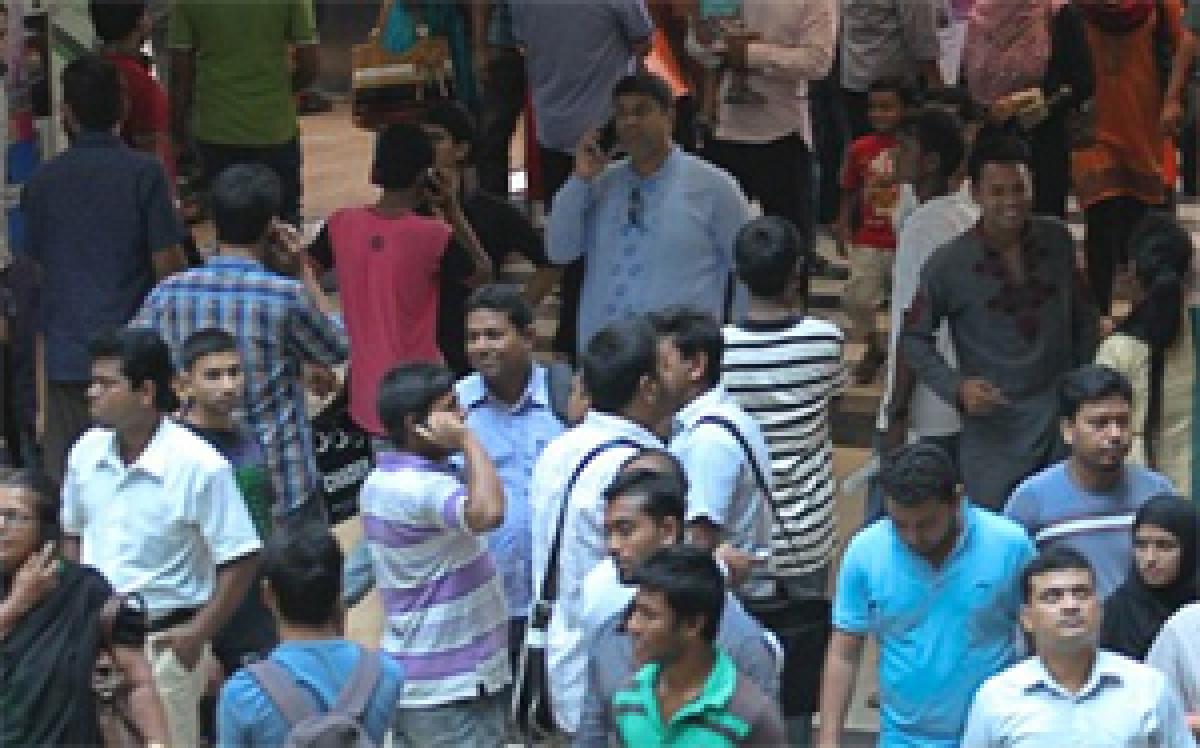Live
- Gunfire in Rayachoti Leaves Two Seriously Injured
- Meditation a profound bridge between divinity, humanity: Guv
- PBD: Communication strategy meet held
- December 2024 Bollywood Movies: A Glimpse of Action, Romance, and More
- President Murmu’s sojourn ends
- BRS govt left huge debt burden: CM
- BJP seeks action against Rahul
- Odisha govt seeks special package for tourism sector
- US Consulate in Bengaluru by January 2nd week: BJP MP
- YSRCP activists celebrate party chief Jagan’s birthday
Just In

At Times Strangers Look Familiar, Here\'s Why. Neuroscientists, including an Indian-origin researcher from Johns Hopkins University, have pinpointed a part of the brain that helps you decipher memory from new experiences.
.jpg) New York: Neuroscientists, including an Indian-origin researcher from Johns Hopkins University, have pinpointed a part of the brain that helps you decipher memory from new experiences.
New York: Neuroscientists, including an Indian-origin researcher from Johns Hopkins University, have pinpointed a part of the brain that helps you decipher memory from new experiences.
In a supermarket, on board the Metro or at airport, you suddenly see a familiar face and say to yourself, “I think I have seen that face”.
“But you ask: is this someone I met five years ago, maybe with thinner hair or different glasses or is it someone else entirely,” said neuroscience professor James J Knierim, who led the research.
“That is one of the biggest problems our memory system has to solve,” he added.
The newly-identified part of the hippocampus creates and processes memory, furthering our understanding of how the mind works and what is going wrong when it does not.
Neural activity in the hippocampus allows someone to remember where they parked their car, find their home even if the paint colour changes and recognise an old song when it comes on the radio.
Along with Sachin S. Deshmukh, former assistant research scientist in Knierim's lab, the researchers theorised that two parts of the hippocampus -- the dentate gyrus and CA3 - competed to decide whether a stimulus was completely new or an altered version of something familiar.
The new research on rats shows that CA3 is more complicated than previously thought -- parts of CA3 come to different decisions and they pass these different decisions to other brain areas.
“The final job of the CA3 region is to make the decision: Is it the same or is it different?” Knierim noted.
Usually you are correct in remembering that this person is a slightly different version of the person you met years ago.
“But when you are wrong and it embarrassingly turns out that this is a stranger, you want to create a memory of this new person that is absolutely distinct from the memory of your familiar friend, so you do not make the mistake again,” Knierim explained.
The findings, published in the journal Neuron, can help explain what goes wrong with memory in diseases like Alzheimer's and could help to preserve people's memories as they age.

© 2024 Hyderabad Media House Limited/The Hans India. All rights reserved. Powered by hocalwire.com







